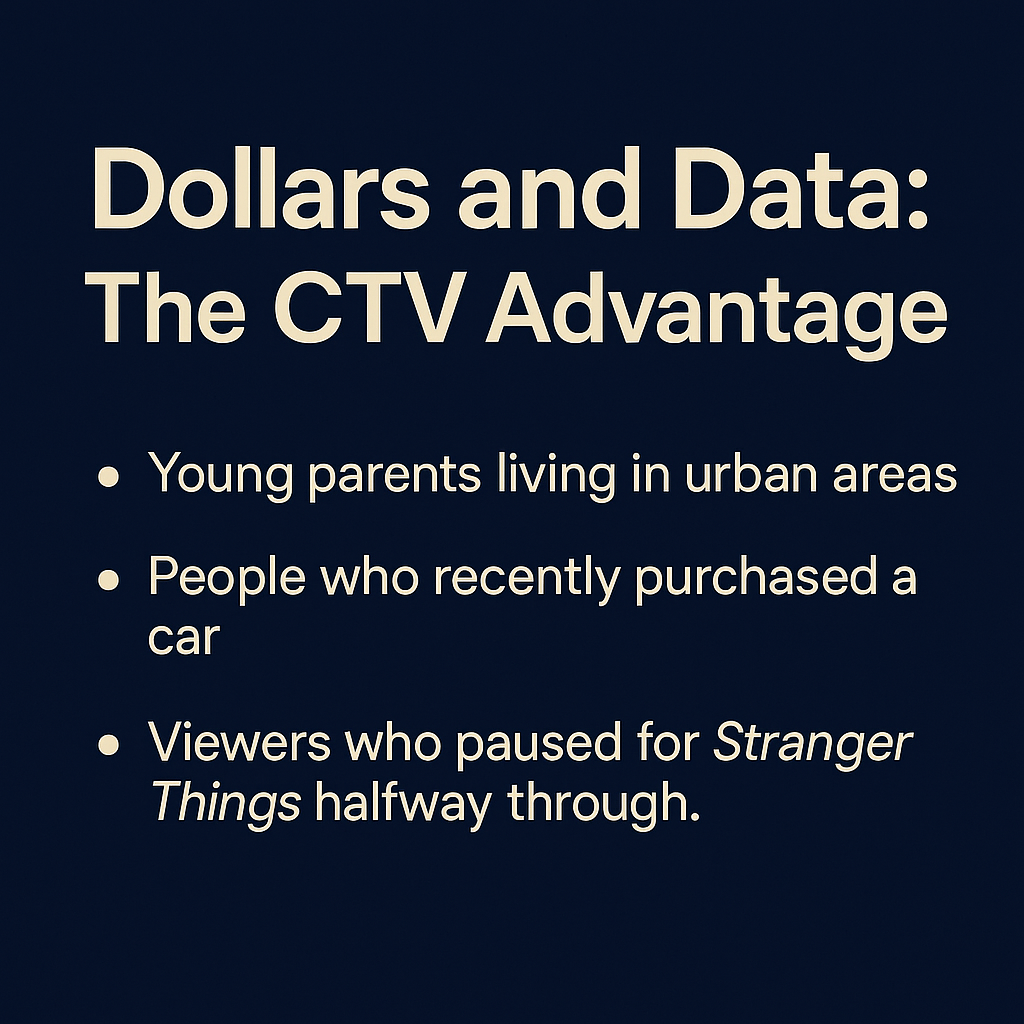
CTV vs Linear TV: How to Choose the Right Ad Spend Strategy in 2025
Some of us may remember a time when a family movie night meant arguing over who would get the TV remote control. One screen, one time, one decision for all. Jumping to now, and living rooms do not look the same: one person is streaming Netflix from the bedroom, another is binge-watching a YouTube series on the big screen, while your parents are adamant that there is nothing better than the cable local news at 8 p.m. The very act of “watching TV” should have multiple anecdotes.
For advertisers, this is not just a trend or a societal phenomenon. What are you going to prioritize? The base usage of linear TV, or the exact use of connected television (CTV)?
Let’s back up—not back up with graphs and high-minded language, but back up with stories, experiences, and what this means for your brand.
Why this debate matters now
For a long time, linear television has governed the advertising world. The value proposition around linear advertising was easy to make: if you bought an ad, for example, during prime time, millions of viewers would see your message at the same time.
And then, streaming came along. The streaming landscape has shaken this industry to the core. Young audiences are old enough (and objective enough) to cut the cord, houses are deluged in subscription services, and advertisers are finding the ability to target aggressive CTV placements with previously unseen levels of data and detail, and targeting is absent from linear.
The point is clear; however, linear TV is not dead. Not by a long stretch. Live sports, major cultural events (like the Super Bowl or Oscars) or appointment TV allow for sizeable audiences to connect. CTV has not aggregated audiences of the same magnitude.
So where do you put your money? The decision is not a simple black and white answer. Let’s investigate.
The human side of CTV: Personal, just like your playlists
Think of how Spotify can create a daily mix for you, and that’s really how CTV works with ads.
Instead of shouting one message at millions of people, CTV allows you to whisper the right message to the right person at the right time. Watching a travel documentary? It’s likely you will get an ad about weekend getaways in your area. Binging a cooking show? Cooking-related ads, maybe from a meal kit brand, could work seamlessly into your experience.
The kind of personalization dug into CTV is priceless for advertisers. It makes the message feel less like an interruption to the viewer’s experience and more like part of the viewing journey. In an age of brands wanting to be more relevant, CTV gives consumers relevance in their own front, literally looking at them on their couches remote in hand.
The emotional at a pull of Linear: Shared experiences still matter
But let’s not be too quick to dismiss linear TV. There is still something powerful about millions of people watching the same content at the same time.
Remember watching the World Cup final? Or if you were tweeting live reactions during the Oscars’ “SlapGate”? That’s the magic of linear TV, and what it is able to provide is shared cultural experiences in real time, which streaming can rarely replicate.
For brands, monetizing those moments means associations with passion, excitement, and a sense of belonging to a special community. A beer ad during the Super Bowl is not just an ad, but an entire moment. And that emotional heft can be of immeasurable value.
Dollars and data: The CTV advantage
Here’s where the cold, hard business case kicks in. CTV’s superpower is data-driven targeting and measurability. CTV can target:

- Young parents living in urban areas
- People who recently purchased a car
- Viewers who paused for Stranger Things halfway through.
Because it is digital, you can measure it exactly: impressions, completions, clicks, conversions—this kind of accountability makes CFOs and CMOs equally happy.
But here’s the rub: While CPMs (cost per thousand impressions) are higher on CTV than linear, the efficiency often balances out. You are paying for relevance, not wasted eyeballs.
The trust factor: Why Linear still wins some battles
On the other hand, linear TV still has trust and credibility.
Whether it is your grandparents or even your parents, the first channel they seek is linear, and it is usually synonymous with reliability. Ads on primetime TV feel legit; they feel that the brand has arrived–one must remember, ads on linear are often the first touchpoints a consumer has with your brand-influencing so much of their long-term opinion.
Even when we talk to young audiences that can care less about cable, linear ads are arguably seen as more prestigious and less invasive than hyper-targeted digital ones. The halo of legitimacy can also be important for brands that are looking to build authority or anchor their launch at stability.
Where people actually watch
Viewing habits are changing faster than ever before. Younger audiences have moved almost completely to Connected TV; middle audiences show a mixed pattern of watching shows on streaming and live events on cable, and older audiences are still regularly using linear.
Which means the question is not what’s trending—it’s where your audience as a whole actually is. If your buyers are Gen Z, linear placements may never reach them. If your core market is Baby Boomers, a placement on Hulu is unlikely to make any impact.
The hybrid reality
In 2025, for the majority of brands, the challenge is not a choice between using CTV or linear, but rather how to use both effectively. Each of these channels has specific strengths, and together they can work cohesively to support each other rather than competing.
Linear television provides the best option for immediate mass reach and cultural relevance, while CTV offers precision, personalization, and measurement. If you consider the advertising pathway, linear can provide attention for the whole of the target audience, while CTV can enable action with the remaining audience.
Transforming strategy into action
Auto Trader, the UK’s largest digital automotive marketplace, wanted to reach a new audience beyond their linear TV base. They executed a Connected TV (CTV) campaign that aimed to replicate their linear TV strategy with advanced measurement to compare the results. They achieved a 51% incremental reach beyond linear alone and especially reached younger, cord-cutters who were never in scope.

Also, in the beauty category, L’Oréal USA made a sizable jump in their YouTube investment and found their CTV campaigns returned $6 for every $1 in ad spend, with significant sales lift and drove effectiveness with new consumer segments.

These case studies provide a simple and powerful takeaway: Use linear TV for a broad reach and CTV for the rest of it—reaching new audiences you wouldn’t have otherwise and then measuring results.
Cut to the chase
Linear TV delivers mass attention and creates cultural moments, while CTV delivers exactly the right people with precision. The smartest brands aren’t deciding to use one or the other; they are using both and learning how to blend them to get the most impact. Test, measure, and optimize across channels. Your audience is watching everywhere, just like your brand needs to be. Don’t waste any more time—think about a TV strategy that works.


